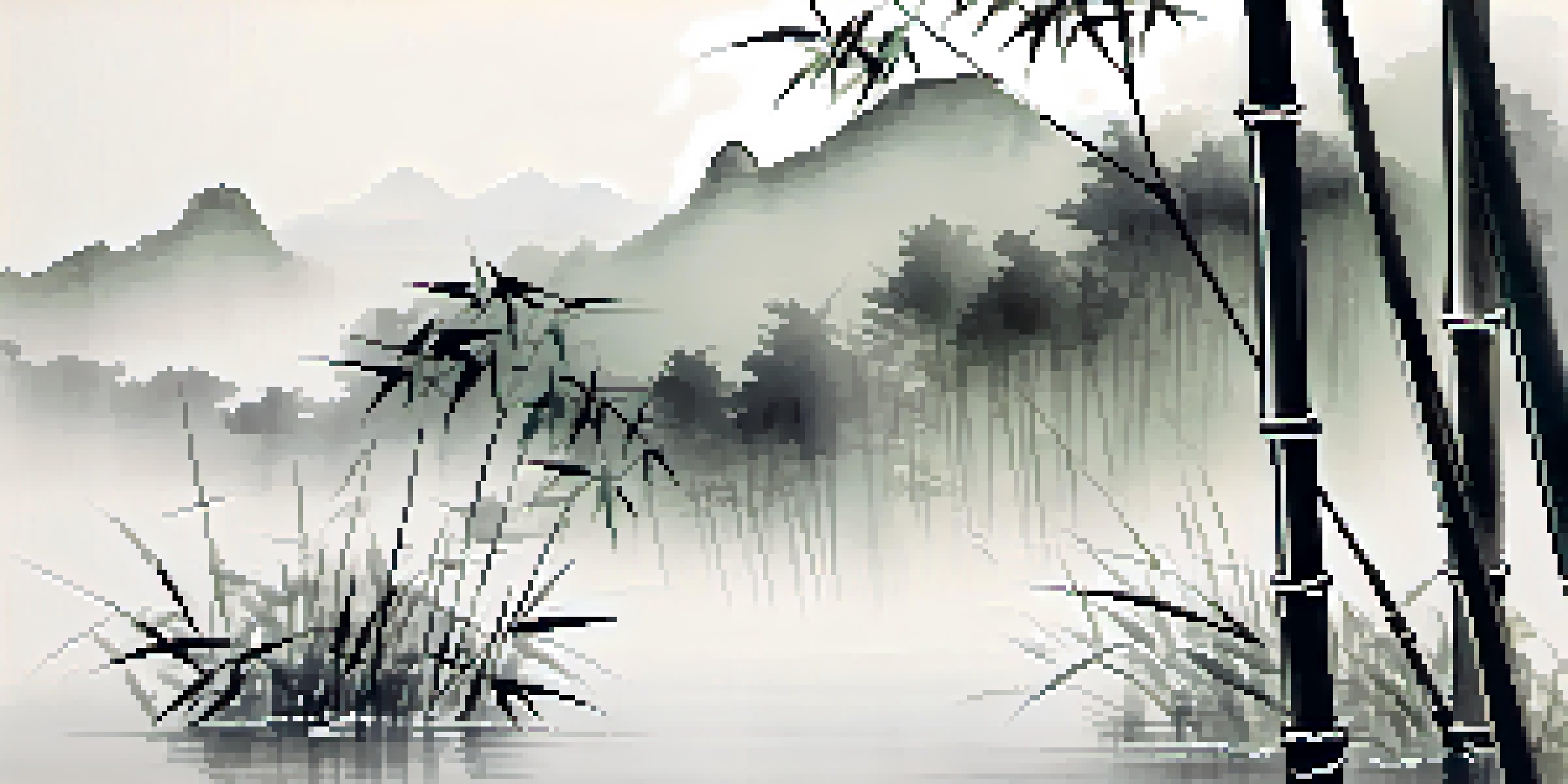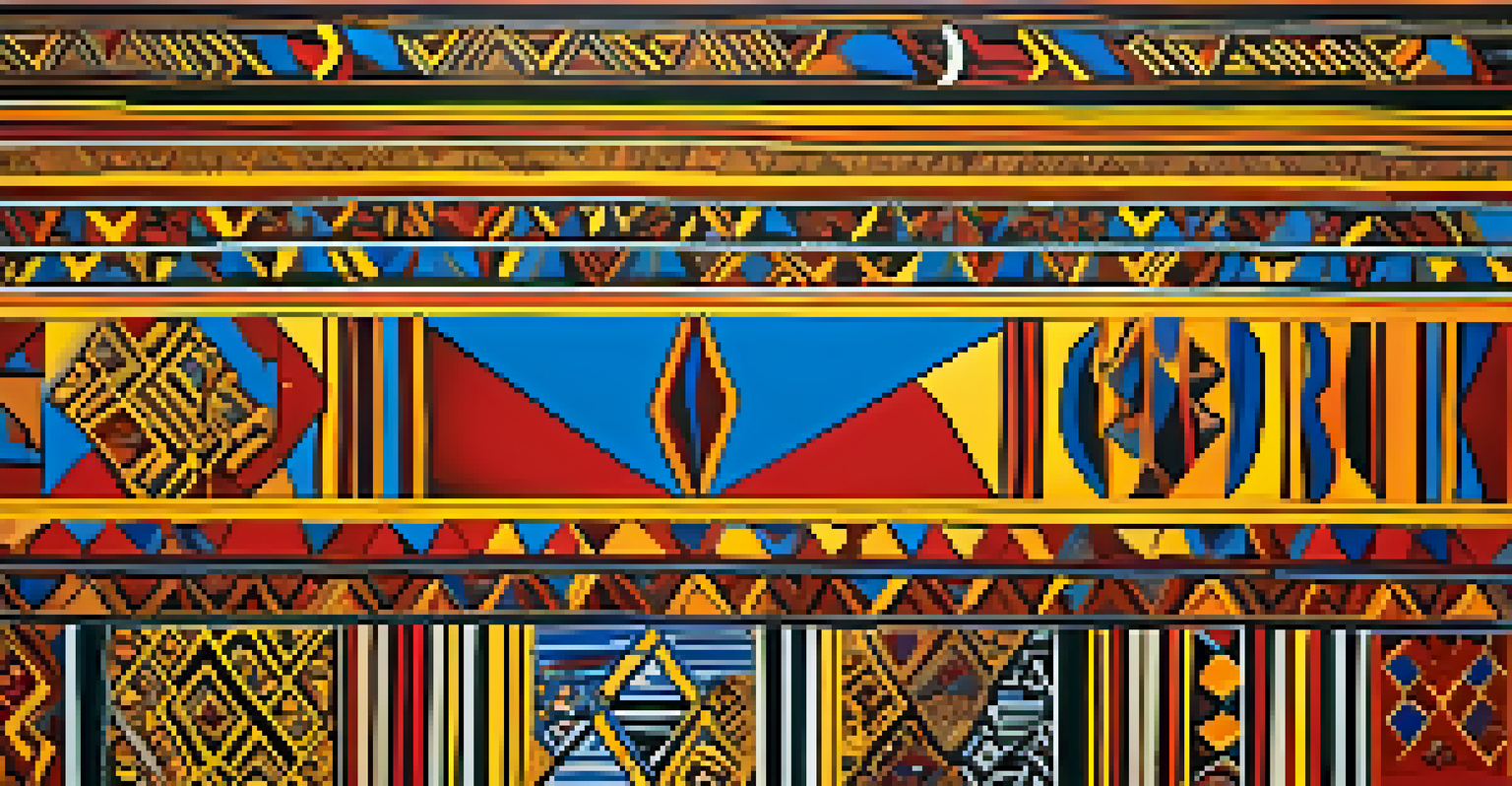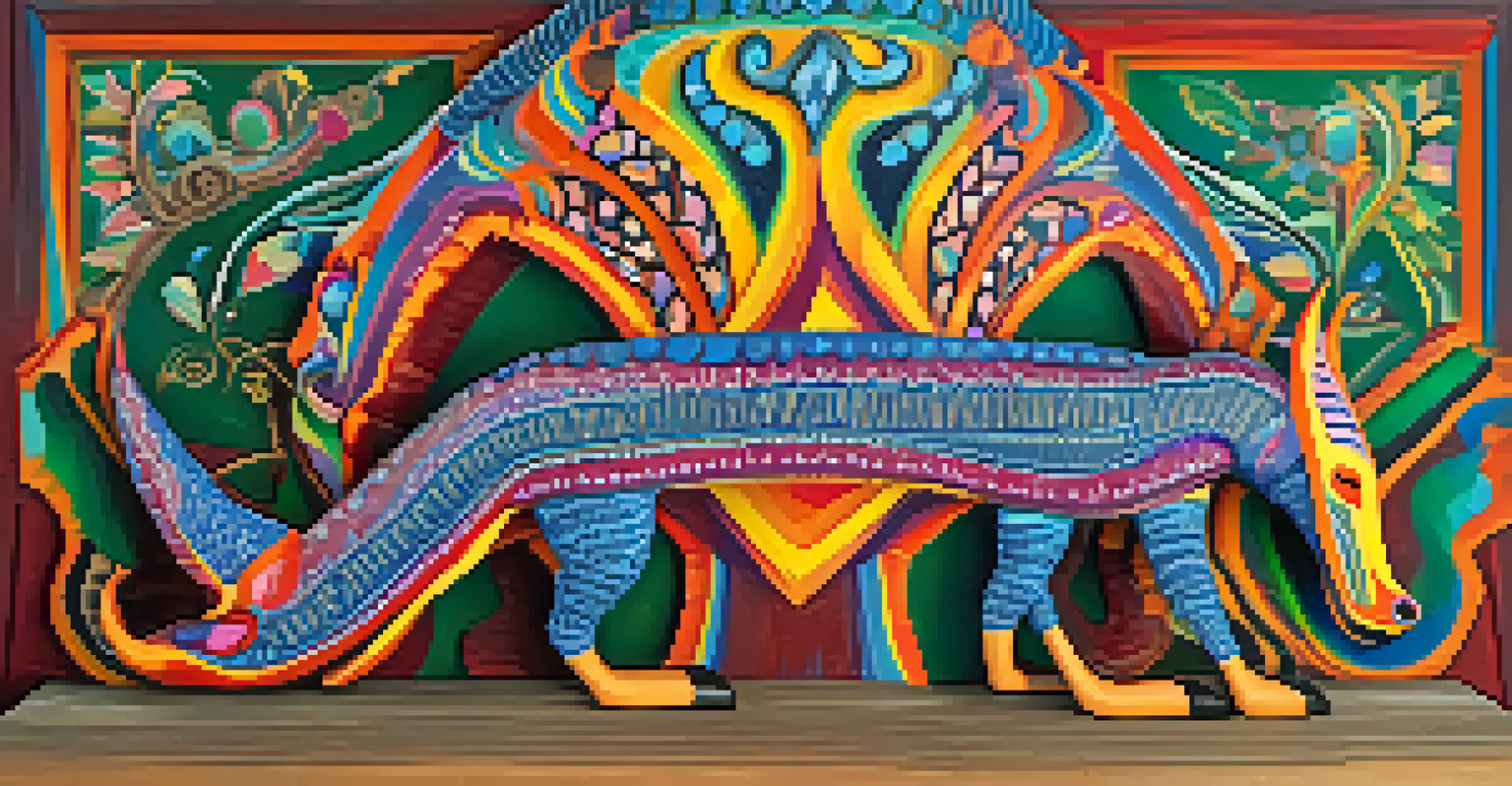Traditional Painting Techniques: A Global Perspective

The Roots of Traditional Painting Techniques
Traditional painting techniques have deep historical roots, often reflecting the culture and beliefs of a society. From ancient cave paintings to ornate frescoes, these methods tell stories of our collective past. Each region has developed its own unique style, influenced by local materials, climate, and societal needs.
Art is not what you see, but what you make others see.
For example, the use of natural pigments in Aboriginal art showcases a connection to the land, demonstrating how environment shapes artistic expression. Similarly, the Chinese ink wash technique illustrates a philosophy of balance and harmony, emphasizing the importance of nature in art. Understanding these roots helps us appreciate the significance behind various traditional techniques.
As we explore these techniques, we can see how they serve not only as forms of artistic expression but also as a means of preserving history and culture. They reflect the values, struggles, and triumphs of the people who created them, making them invaluable to our understanding of human experience.
Indigenous Art: A Celebration of Community and Heritage
Indigenous art forms often focus on community and storytelling, using painting as a means to pass down traditions. Techniques like totem painting in Native American cultures or sand painting in Aboriginal communities serve to connect generations. Each brushstroke carries the weight of history, culture, and identity.

These art forms are typically created with locally sourced materials, emphasizing sustainability and a deep relationship with the land. For instance, many indigenous artists use natural dyes and pigments derived from plants and minerals, which not only enhance the artwork's beauty but also reflect their respect for nature. This intimate connection fosters a sense of belonging and continuity.
Art Reflects Culture and History
Traditional painting techniques serve as a vital connection to the cultural and historical narratives of societies.
Moreover, indigenous painting techniques often incorporate symbols and motifs that convey specific meanings, making each piece a narrative in its own right. By engaging with these art forms, we can better understand the values and beliefs of indigenous communities, fostering appreciation and respect for their cultures.
Asian Brush Painting: Harmony with Nature
Asian brush painting, particularly in Chinese and Japanese traditions, emphasizes harmony with nature and the importance of simplicity. This technique employs the use of a brush and ink, often on rice paper or silk, to create fluid and expressive lines. The focus is on capturing the essence of a subject rather than a detailed representation.
Every artist dips his brush in his own soul, and paints his own nature into his pictures.
Artists often train for years to master the delicate balance of brushwork and ink application, with each stroke reflecting their mood and intention. For instance, in Chinese ink wash painting, the idea of 'xieyi' or freehand style allows the artist to express their feelings about nature, resulting in evocative landscapes or serene depictions of flora and fauna. This approach highlights the philosophy that art should evoke emotion rather than merely illustrate reality.
Additionally, Asian brush painting often incorporates calligraphy and poetry, merging visual art with literary expression. This combination enriches the artwork, creating layers of meaning that invite viewers to contemplate the relationship between text and image. Through this lens, we see how traditional painting techniques can serve as a profound medium for personal and cultural expression.
European Techniques: Renaissance to Impressionism
Europe's painting techniques evolved significantly from the Renaissance through to Impressionism, each movement bringing new approaches and styles. The Renaissance marked a departure from religious themes to more humanistic subjects, with artists like Leonardo da Vinci and Michelangelo mastering techniques such as chiaroscuro and sfumato. These methods added depth and realism to their works.
As time progressed, Impressionism challenged traditional norms, emphasizing light and color over detail. Artists like Claude Monet and Pierre-Auguste Renoir experimented with brush strokes that captured fleeting moments, reflecting the changing nature of perception. This shift demonstrated that painting could convey emotion and atmosphere, rather than just reproduce reality.
Indigenous Art Celebrates Community
Indigenous painting forms emphasize storytelling and community, using local materials to convey identity and values.
These European techniques not only influenced art movements globally but also inspired countless artists to explore new methods. The legacy of these innovations continues to resonate, reminding us of the transformative power of traditional painting techniques in shaping artistic landscapes.
African Painting: Bright Colors and Bold Expressions
African painting is renowned for its vibrant colors and bold expressions, often reflecting the diverse cultures and traditions across the continent. Techniques vary widely, from intricate tribal designs to modern interpretations, each telling a unique story of identity and community. The use of color is particularly significant, with different hues symbolizing various emotions and cultural meanings.
For instance, the Ndebele people of South Africa are famous for their geometric wall paintings, which serve not only as decoration but also as a form of communication. Each pattern tells a story, revealing social status or marking significant life events. This connection between art and storytelling underscores the importance of visual expression in African cultures.
Additionally, contemporary African artists are blending traditional techniques with modern influences, creating a dynamic interplay between old and new. This evolution highlights the adaptability of African painting, showcasing how it continues to evolve while maintaining its roots. Through this lens, we gain insight into the richness of African artistic heritage and its relevance in today's world.
Latin American Folk Art: Colorful Narratives of Identity
Latin American folk art is a vibrant tapestry woven from the region's rich cultural heritage, often characterized by colorful narratives and symbolic motifs. Techniques such as papel picado (perforated paper) and retablos (small devotional paintings) are deeply rooted in community traditions and storytelling. These forms of art celebrate local customs and beliefs, making them integral to cultural identity.
For example, Mexican alebrijes, brightly colored sculptures of fantastical creatures, embody the spirit and imagination of their creators. These works often reflect a fusion of indigenous and Spanish influences, showcasing how traditional techniques can evolve while honoring their origins. This blend of styles highlights the complexity of Latin American identity and the role of art in expressing it.
Future of Techniques in Digital Age
Despite challenges from digital art, there is a growing movement to preserve traditional painting techniques for future generations.
Moreover, folk art serves as a medium for social commentary, addressing issues such as inequality and cultural preservation. Artists use their works to provoke thought and inspire change, demonstrating that traditional painting techniques can transcend aesthetics and become powerful tools for advocacy. Through this lens, we see how Latin American folk art continues to thrive and resonate with audiences worldwide.
The Future of Traditional Painting Techniques
As we look to the future, traditional painting techniques face both challenges and opportunities in a rapidly changing world. With the rise of digital art, many fear that these age-old methods may fade into obscurity. However, there is a growing movement to preserve and promote these techniques, ensuring their relevance for future generations.
Art schools and community programs are increasingly incorporating traditional techniques into their curricula, encouraging younger artists to explore their cultural heritage. Workshops led by master artisans provide hands-on experiences, fostering a deeper appreciation for the skills and stories behind these methods. This revival not only honors tradition but also inspires innovation.

Ultimately, the future of traditional painting techniques lies in their ability to adapt and evolve while maintaining their essence. As artists continue to experiment and find new ways to express their identity through these methods, we can expect a vibrant fusion of old and new, ensuring that the stories and skills of the past remain alive and relevant in our contemporary world.